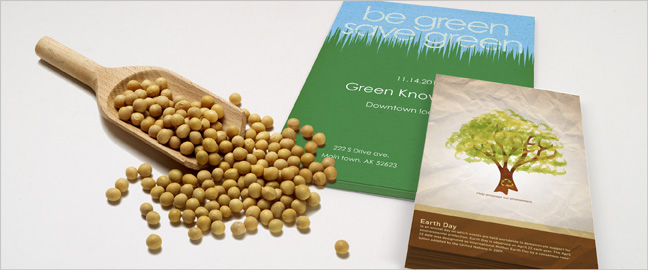
sustainable printing in 2021
With Earth Day upon us, it’s a good time to look at how certain business practices impact the environment, in particular the printing industry. Over the years, the printing industry has evolved with more green options and environmentally-friendly technology, often referred to as sustainable printing. Typically, sustainable printing can be broken down into 3 categories:
- Paper
- Inks
- Printing process
PAPER
Paper is the category that is the most familiar, as recycled paper has been around for decades. Approximately 4 billion trees are used for paper production annually. Making the switch to recycled paper can have an immediate impact on your company’s carbon footprint. The difference between regular paper and recycled paper is how it’s produced. Regular paper is sourced from timber that is pulped and made into paper. Recycled paper is made from previously used paper products. Post-consumer is the most common type of recycled paper. This is made from waste-paper products, such as newspapers, junk mail, and documents. These items are collected through recycling services, pulped, and made into recycled paper.

There are many different grades and types of recycled paper and recycled paper can be requested for most print projects. While there is an increased cost for recycled paper products, the cost has become much more affordable over the years as technology has improved and the range of available products has increased.
To read more about how the paper industry has made great progress towards sustainability recently, check out this informative article: https://www.tgwint.com/dispelling-myths-three-common-misconceptions-paper-industry/
INKS
Inks are often overlooked when thinking about sustainable printing, as paper is the obvious factor. While petroleum-based inks are most commonly used for printing, other “green” choices do exist. In recent years, vegetable and soy inks have emerged as viable alternative options for printing and have several environmental benefits as well as a quicker drying time. Interestingly enough, soy-based ink was initially developed in the 1970s, during the oil crisis, as an alternative to petroleum-based ink, which was experiencing a shortage. When an alternative ink is combined with recycled paper, the carbon footprint is reduced even more.

Image: PsPrint
PRINTING PROCESS
In addition to recycled paper and environmentally friendly inks, printers can also use sustainable printing methods to print products. Digital printing and LED UV Printing are two of the most common sustainable printing methods. LED UV is considered an exceptionally “green” printing method as it uses much less power than traditional printing. Digital printing doesn’t require a printing plate, so it produces significantly less waste than traditional printing and is also a much quicker process. Keep in mind that not all products can be printed with a sustainable printing method, as it depends on the type of project, finishing process, and inks used.
Learn more about sustainable printing and green solutions through this very informative article from JosephMerritt.com: https://www.josephmerritt.com/marketing-media/articles/4-best-green-solutions-for-sustainability-in-the-printing-industry
2022 marketing plan
Are you ready to get started with your 2022 marketing plan? Get in touch today, we can help make your vision a reality and put you on the right path for success in 2022.
